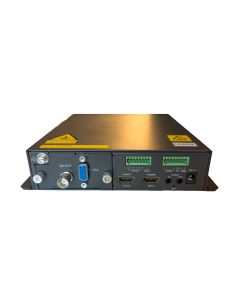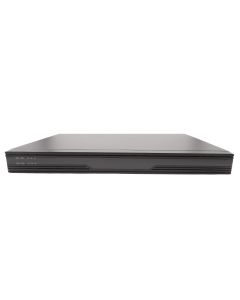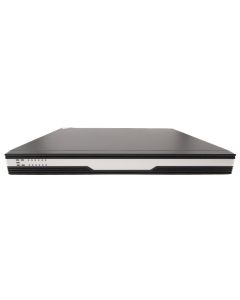With Decoders
Live View Solutions for Video Walls, Guard Stations, Production Monitoring, and Operational Data
Combine Surveillance Video with Other Application Dashboards
Decoders - Live View Solutions for Video Walls, Guard Stations, Production Monitoring, and Operational Data
A decoder is a device that grabs multiple IP camera streams from multiple cameras or NVRs, and allows you to display them on multiple monitors or TVs using HDMI connections.

If you need to see a lot of cameras, like a guard station, command center, or for process monitoring a decoder is a vital piece of equipment. You use Viewstation, our VMS, to setup and modify what is seen on the decoder output. In a command center this will be used in conjunction with each other: with the decoder used to show all cameras on the video wall and viewstation used to focus on areas of concern. However, this is not the only use for a decoder. Unlike viewstation, you can also use a decoder to create a live view feed that is not alterable by the user, which is invaluable at reducing compliance issues. This means that you use a decoder to create a guard station that has no mouse or keyboard and which has no possibility that the security guard is browsing the internet or playing minesweeper instead of looking at the video feed. In the same way, the safety compliance team in a manufacturing environment never has to worry about if the user maximized a single camera and is missing key feedback, such as a production jam or increase in temperature on a manufacturing sensor.
Decoders can add remote / VPN devices if they have network access to them, but you need to make sure you have the bandwidth both on the internet side and VPN wise to deal with it.
Our decoders also have HDMI inputs that allow you to pull in non-surveillance video. So, for example, a retailer could connect to a PC running a looping presentation showing a business promotion, offer or update. As another example, a manufacturer or energy company might display the production outputs / machine diagnostics of operational sensors or production measurement software.
Helpful Guides
- How Manufactures use Decoder Inputs
- How Educational Administrators use Decoder Inputs
- How Auto Dealerships use Decoder Inputs
- How Self Storage Facilities use Decoder Inputs
- How Healthcare Providers use Decoder Inputs
- How Logistics Companies use Decoder Inputs
- How Restaurants use Decoder Inputs
- How Convenience Stores use Decoder Inputs
- How Energy Companies use Decoder Inputs
- How Food Producers use Decoder Inputs
- Setting up Full Screen Alerts in Viewstation
- VIdeo: Viewstation VMS overview
Understanding Decoder HDMI Outputs
What is a video wall?
Video walls are usually sets of displays, either monitors or televisions that display large amounts of live camera feeds.
Video walls generally present static displays - so that when you need to see a certain camera very quickly, you can always look at the same spot and see that camera.
This is extremely important for guards, production monitoring, and any position where turnover or shifts are taken. You don’t want someone having to search for a camera via software while a critical event is underway.
Video walls also require zero user input - meaning there’s no chance of your guard closing the VMS software by mistake and not being able to do their job. This helps reduce the burden on IT.
Examples:
Guard Stations
Video Walls
Checkpoints
Offices
Waiting areas
Production monitoring
Machine Health Monitoring
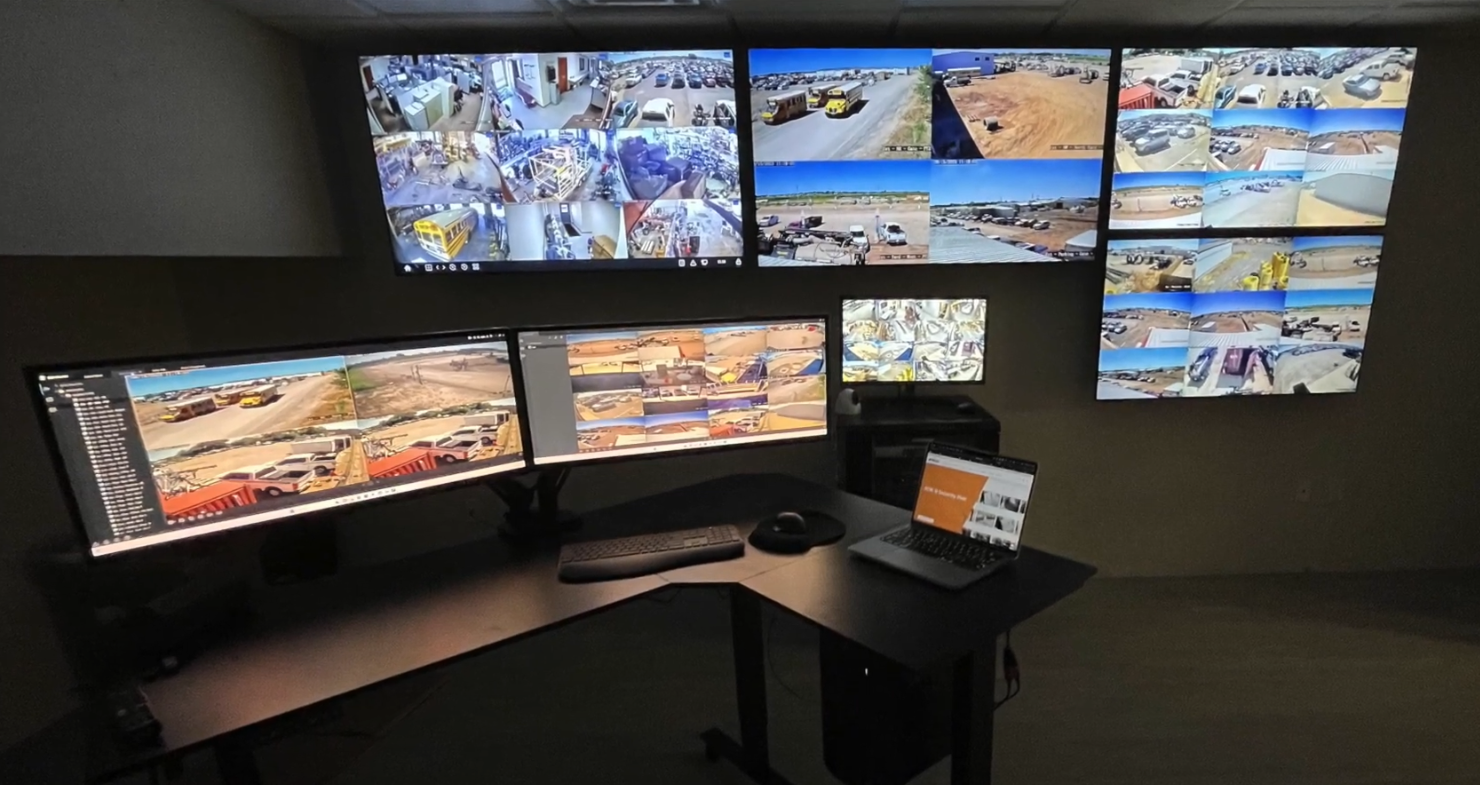
Benefits of Video Walls
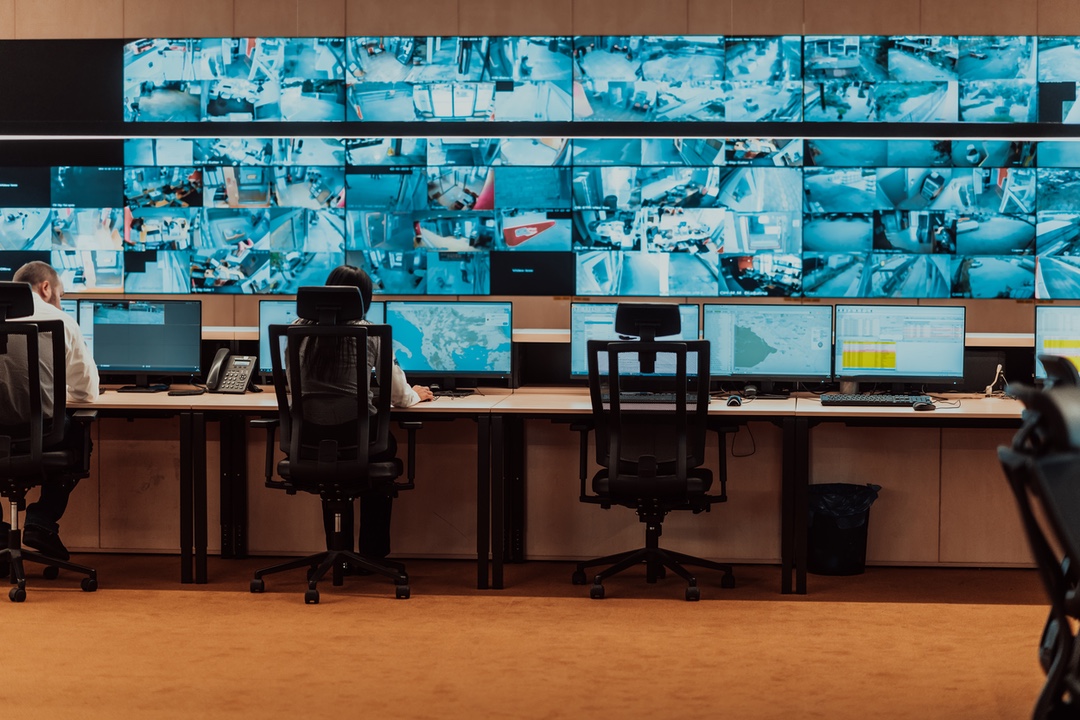
Cameras are always available
Cameras are always in the same spot - meaning you immediately see them
No user input required
User can’t adjust or “break” views
Lots of flexibility and customization available
With SCW decoders - multi location/multi-NVR compatible
Decoder Output vs NVR HDMI Output
NVRs also have HDMI outputs and are able to display live view - so how is a decoder different?
Mostly in the size of a video wall. Most NVRs have 2 or 3 video outputs, and limits on how many channels can be displayed. Video walls tend to be more for larger systems, or for those with specific viewing requirements. For example, someone may have 16 cameras they want to display, but want them all large. So they may get a decoder and display 4 cameras per large display.
NVRs are also limited to the cameras that are added to that NVR - while a decoder can display camera feeds from any NVR that is within network access to them.
So in theory - if you had multiple locations and had a VPN setup, you could have the decoder display every location at your central office for example.
In most cases, the NVR’s HDMI and the decoder are used in tandem. The NVR’s HDMI output may be used to display some cameras, or be used for playback.
Decoder Output and Playback
Decoders are not intended for Playback.
Most decoders do not do playback and most do not even have mouse inputs for playback or video control. Decoders are generally set up via software or web interface, and are rarely if ever adjusted “on the fly” as it defeats some of the benefits of a video wall.
When playback is needed, most clients will either opt to use the NVR’s local HDMI output and mouse or also include a PC running SCW’s Viewstation software as part of their viewing setup.
Understanding Video Decoder HDMI Inputs
One interesting feature of SCW’s decoders is the HDMI input. While HDMI outputs are fairly straight forward, they display cameras. SCW’s decoders also have HDMI inputs as well - but why would you need that?
The HDMI input allows a device, like a PC, system output, or anything else with an HDMI output to display within your video wall as part of a grid.
Check out the example below. Decoders allow critical production info to be combined with live video feeds, allowing operators to make informed decisions quickly. The possibilities are nearly endless with this, as anything with an HDMI connection can be displayed with grids and be distributed to multiple displays.
Combining Application Data with Surveillance Video
The HDMI inputs allow you to connect another output, like a PC, to display cameras feeds along side other displayed data.
Examples:
Digital Signage
Service Level Monitoring
Machine Health Diagnostics
Operational Sensor Monitoring
Refrigeration Temperature Monitoring
Gas Pump Health
Queuing Systems
Time-To-Service Systems
Digital Menus
Table Management Software
Order Status Statistics
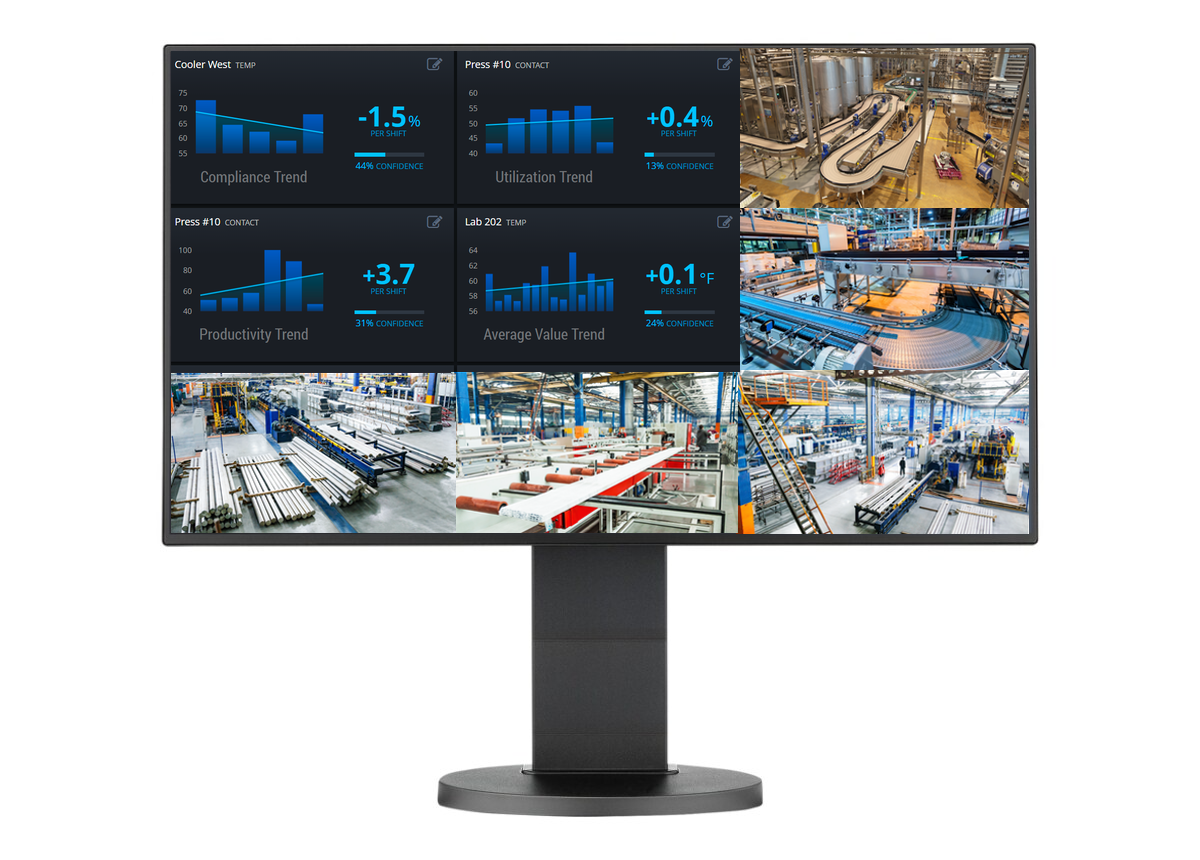
Setup: Networking Info
SCW’s decoders can be set up two ways:
1. SCW decoders connect to the NVR and “grab” camera feeds
In this case, the NVR’s outgoing bandwidth will be used along with the channel limit.
2. SCW decoders connect to the IP camera directly
In this case, the NVR’s bitrate won’t be used - but keep in mind IP cameras have limits to how many devices (IE, NVRs, decoders, etc) can connect to them directly. It’s best to limit this to two devices. Using SCW’s multi-network NVRs you can also set the decoders up on the “camera network” side and eliminate bandwidth from your LAN.
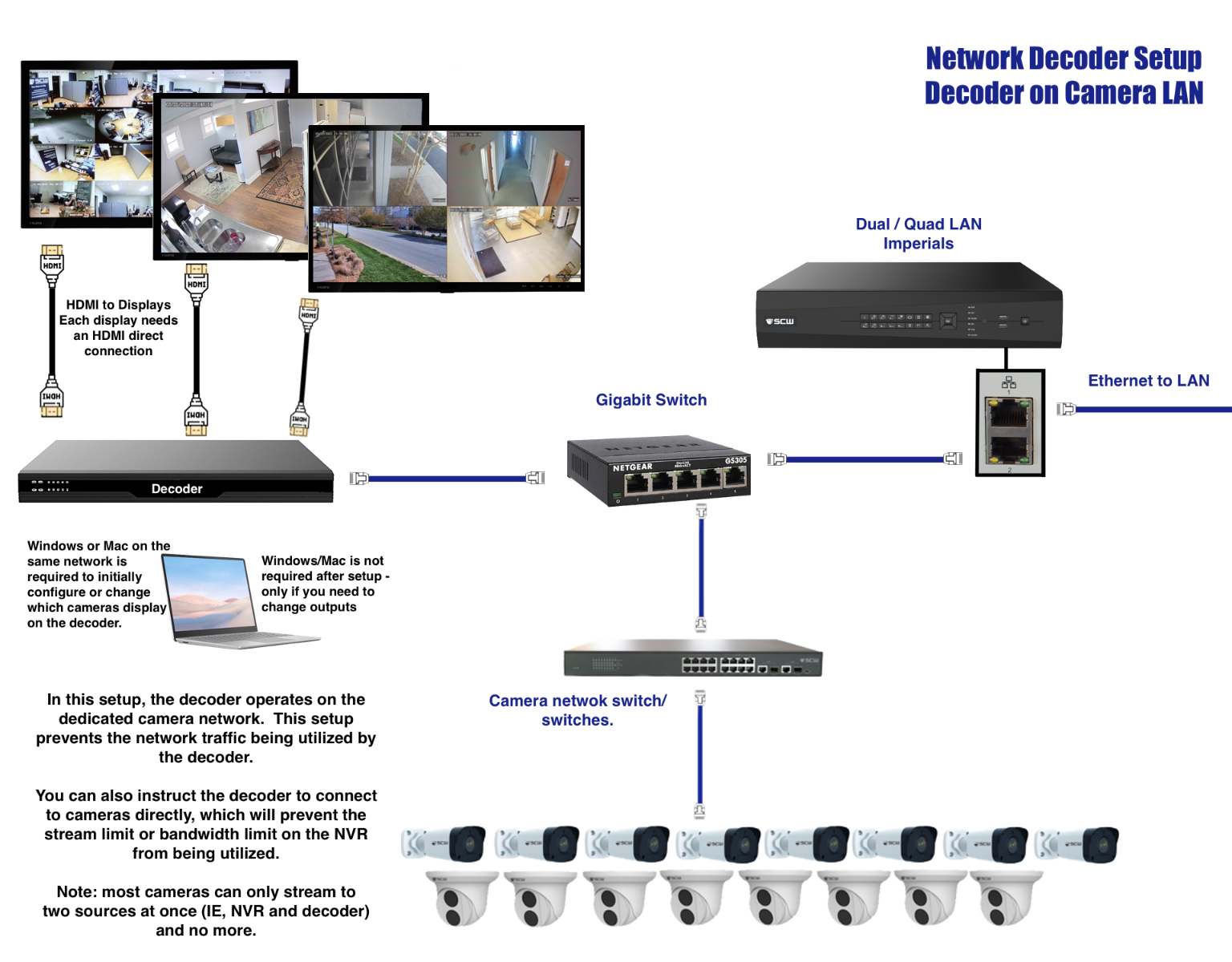
FAQ
Q: How many streams can a decoder support?
A: It depends on the individual decoder hardware - check the specs of the specific decoder or contact SCW to confirm.
Q: How far can HDMI go?
A: While there is no specific industry limit - most standard cables top off at about 50FT. HDMI over Cat6 extenders do exist that can extend that distance to hundreds of feet. SCW’s HDMI decoders are standard HDMI and will work with any other standard HDMI equipment.
Q: How do I setup a decoder?
A: SCW’s decoders are setup using SCW Viewstation. You simply add the NVRs or camera to Viewstation, add the encoder to Viewstation, and set it up under the “video wall” section.
Q: Does Viewstation have to be open for the decoder to work?
A: No, Viewstation is only for one time setup. Once you have the views you want, you can close Viewstation. You will only need Viewstation again if you want to make changes to the video wall.
Q: What about playback?
A: There is no mouse control of a decoder - so playback needs to be done either through the NVR’s HDMI output and a mouse connected to it, or through SCW Viewstation software.
Q: Should I use a decoder?
A: Setting up either large or distributed viewing can be complicated with many considerations. If you want to know what solution is best for your unique needs - contact us and we’ll be happy to walk you through the options!
Our Network Decoder Selection

Lean on the experts
We'd be happy to work up a custom quote or take your floorplan and create a security coverage map.
Get aCustom Quote




